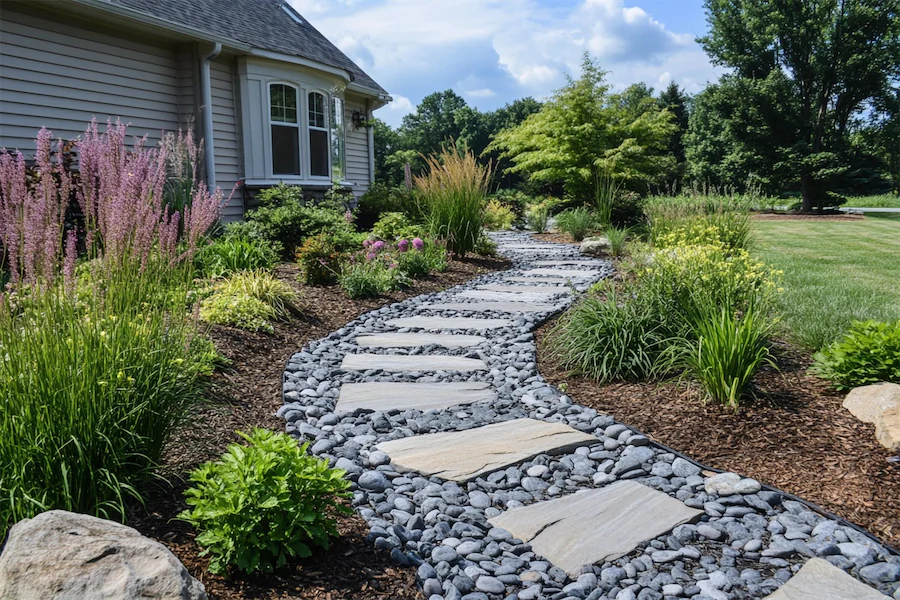A Stone Pathway Garden integrates stone walkways into the landscape, enhancing both functionality and aesthetic appeal. These pathways guide movement through the garden, protect plantings, and introduce natural textures that complement the surrounding flora.
History and Origins of Stone Pathway Gardens
The use of stone pathways in gardens dates back centuries, with early examples found in Japanese and European gardens. In Japanese culture, stepping stones, or “tobi-ishi,” were used to navigate wet or delicate areas, leading to tea houses or sacred spaces. In European estates, gravel and stone paths were integral to formal garden designs, delineating spaces and providing structured routes through expansive landscapes.
Key Features of Stone Pathway Gardens
- Material Variety: Utilizing different types of stone, such as flagstone, cobblestone, or gravel, to create diverse textures and visual interest.
- Design Versatility: Incorporating straight, curved, or meandering paths to suit the garden’s style and the natural topography.
- Functional Aesthetics: Serving practical purposes by connecting different garden areas while enhancing the overall design with natural elements.
Applications of Stone Pathway Gardens
- Residential Gardens: Homeowners can create inviting walkways that lead through various garden zones, adding structure and charm to their outdoor spaces.
- Public Parks: Stone pathways provide durable and attractive routes for visitors, guiding them through different sections of the park.
- Botanical Gardens: These pathways help manage foot traffic and protect plant collections, all while contributing to the garden’s aesthetic appeal.
Considerations When Designing a Stone Pathway Garden
- Material Selection: Choose stones that complement the garden’s style and are suitable for the local climate to ensure longevity.
- Pathway Layout: Design paths that are proportionate to the garden’s size and consider the natural flow of movement.
- Installation: Ensure proper foundation and drainage to prevent shifting or water accumulation on the path.
- Maintenance: Regularly check for and address any uneven stones or encroaching vegetation to maintain safety and appearance.
Conclusion
Incorporating stone pathways into garden design offers a harmonious blend of functionality and beauty. By thoughtfully selecting materials and layouts, these pathways can enhance the garden’s structure, guide visitors, and add timeless elegance to any outdoor space.
